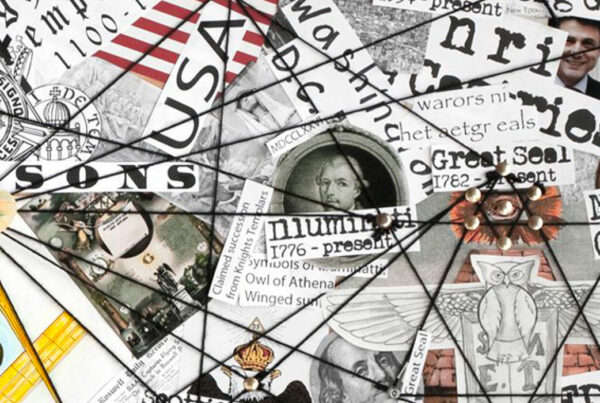Hate speech is any expression that seeks to denigrate, reject, or threaten a person or group based on characteristics such as origin, skin color, gender, sexual orientation, religion, or nationality. It may take the form of text, images, videos, or audio messages, and when expressed publicly, it can incite hostile or violent behavior. This is known as incitement to hatred.
Mechanisms Used in Hate Speech
- Homogeneity bias: The tendency to believe that all members of a community share the same traits — particularly physical ones — reinforcing stereotypes. (“all the same”)
(for more, see resources > Homogeneity Bias)
- Stereotypes: Simplified and often negative representations of a social group, reinforcing prejudice.
- Animalization: Attributing animal characteristics to a human group to dehumanize them and justify violent behavior.
- False accusations: Rumors and lies circulating online can generate unjustified hatred and lead to acts of violence.
- Conspiracy thinking: Belief in conspiracy theories that designate scapegoats and fuel paranoia, such as the “Great Replacement” or antisemitic myths.
These mechanisms, often rooted in prejudice and misinformation, reinforce social division and discrimination. A lack of critical thinking encourages the spread of increasingly violent discourse. When encountering such messages, it is essential to question and challenge them, distinguishing between opinions and facts.
>>> link to article “What is Information? (Facts VS Opinion)”
Fertile Ground: The Internet and Social Media
With the internet, hate speech spreads faster and more widely than ever before. Social platforms allow anyone to publish, share, and comment on content — often without moderation. Hate messages, frequently shocking and emotionally charged, generate more interactions (clicks, shares, comments), which boosts their virality.
👉 Algorithmic logic favors such content: what shocks, divides, or provokes is often prioritized over content that calms or provides nuance.
👉 Anonymity or screen distance absolves authors of responsibility, as they often fail to grasp the real-world impact of their words.
Every day, billions of pieces of content are posted on digital platforms. A few statistics illustrate the scale of the phenomenon:
- 🐦 X (formerly Twitter): 500 million posts per day
- 🎥 YouTube: 300 hours of video uploaded every minute
- 💬 Facebook Messenger: over 100 billion messages sent daily
- 📱 TikTok: over 30 million daily active users
👉 Of course, only a tiny fraction of this content constitutes hate speech. But this constant, exponential flow creates an ecosystem in which hate speech can spread at lightning speed, sometimes slipping under the radar of moderation (when it even exists!). It only takes one provocative or stigmatizing message to be shared, commented on, or reposted to reach thousands — even millions — of people.
Some content is even disseminated automatically via “bots” (automated software) capable of mass-distributing targeted messages. These techniques were observed, for example, during Donald Trump’s presidential campaign, where bots sent personalized messages to voters to influence their opinions.
This phenomenon contributes to an overload of content, where quality information becomes drowned in an ocean of viral, superficial, or manipulative posts.
An Economic Model That Favors Polarizing Content
It is no coincidence that hateful or divisive content tends to surface more than other types: it captures attention. And attention is precisely what digital platforms seek to capture.
Social networks operate on an economic model based on attention and engagement. Like newspapers or television, they sell advertising space. But for ads to be seen, users must stay connected as long as possible. To achieve this, platforms:
- collect a mass of personal data (geolocation, interactions, emojis, login times, etc.),
- analyze this data to target content most likely to hold attention,
- adjust their algorithms accordingly.
And what captures our attention most… is often the sensational, shocking, or emotional. Not nuanced facts or constructive debates.
Algorithms are not explicitly designed to spread hate speech. But such content is among the most engagement-generating. It therefore naturally finds a fertile ground within the algorithmic environment of social networks.
>>> link to article “Virality and Information on Social Media”
What About Traditional Media?
Hate speech does not circulate solely on social networks. Certain media outlets also contribute to its dissemination, intentionally or not.
This can occur through:
- the uncritical relay of rumors or false information,
- the normalization of discriminatory statements, under the guise of “debate,”
- the repeated invitation of personalities known for extremist views,
- or sensationalist headlines that stoke fears or divisions.
| 🗞 Example: In the Western Balkans, media outlets such as RT Balkan, linked to Russian influence strategies, relay anti-Western or pro-Russian narratives and fuel distrust toward the European Union or NATO. Such content can exacerbate ethnic divisions and reignite historical tensions. 🗨️ In Kosovo, experts like Bodo Weber warn about how certain media outlets fuel interethnic tensions through victimhood narratives, abusive generalizations, and biased conflict coverage. These narratives reinforce stereotypes, encourage radicalization, and can lead to concrete violence. (https://kossev.info/) |
A Threat to Democracy and Human Rights
Hate speech undermines social cohesion, human rights, peace, stability, and respect for diversity. It weakens shared values and often lies at the root of social tensions and violence. It can also hinder democratic debate by polarizing public opinion.
▶️ Article 20 of the International Covenant on Civil and Political Rights obliges states to prohibit any incitement to hatred or violence.
▶️ In 2021, the UN proclaimed June 18 as the International Day for Countering Hate Speech, highlighting the importance of combating this scourge.
How to Combat the Spread of Hate Speech?
- Strengthen media and information literacy education: Learn to recognize hate speech, stereotypes, and to distinguish between fact and opinion.
- Develop critical thinking: Question sources, cross-check information, detect manipulations.
- Encourage inclusive speech: Highlight voices that promote dialogue, tolerance, and respect for differences.
- Report hateful content on social media, in comments, or in traditional media.






